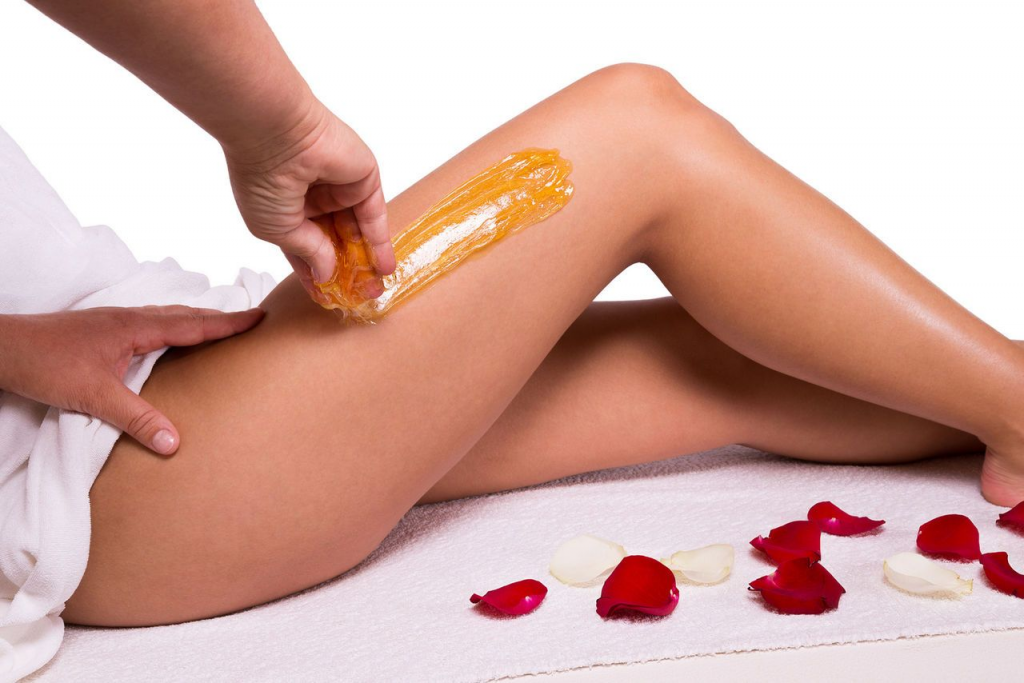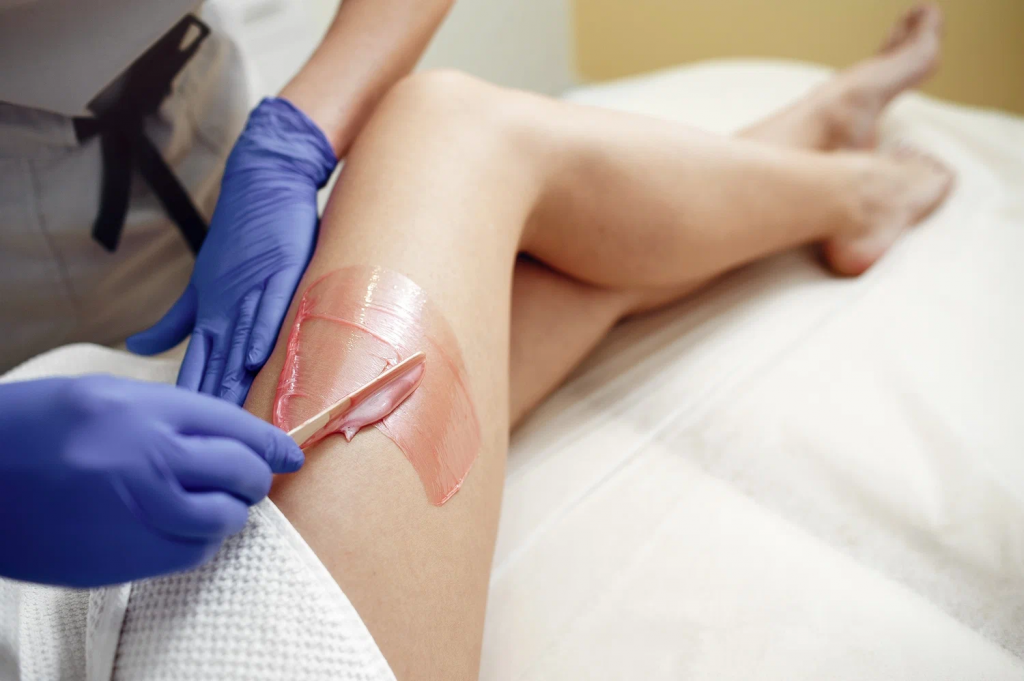Ready to take the plunge and handle your bikini wax at home? Using hard wax is a great choice for the delicate bikini lines, offering a less painful alternative to other hair removal products. Unlike soft waxes, hard wax adheres only to the hair, making it more suitable for sensitive skins found in intimate areas. This guide will not only help you navigate through the DIY Brazilian waxing process but also ensure you’re equipped with expert tips to make your at-home experience as smooth as your results. Let’s get started on learning to wax your bikini area gently and effectively with hard wax.
Preparing for Your Bikini Wax with Hard Wax
In the realm of hair removals, not all waxes are created equal. Hard waxes are ideal for both regular bikini waxes and more sensitive Brazilian waxing. The best way to choose a hard wax is to look for options that are gentle on the skin and designed for sensitive areas. High-quality hard waxes normally contain natural ingredients, such as beeswax and oils, providing additional comfort and skin protection during the hair removal process. For a good result, making sure that your wax is suitable for your skin type is fundamental.

Comparing Wax Types – Why Hard Wax Wins for Bikini Areas
Hard waxes solidify and wrap around the hair, they do not stick as much to the skin, resulting in a less painful experience. Soft waxes, on the other hand, are better for larger areas like the legs, as they require cloth strips for removal and can be more painful when used on more sensitive spots.
Key Ingredients to Look for in High-Quality Hard Wax
You should look for soothing components like chamomile and aloe, known for their skin calming properties. Similarly, titanium dioxide is a popular additive because it makes hard waxes more creamy and less likely to break hairs, which helps keep ingrown hairs at bay.
Essential Tools for a Successful Hard Wax Experience
Even if you have the best hard wax at your disposal, you’ll need the right tools to get the job done. Investing in quality waxing kits for your at-home bikini waxing session can make the entire process easier and more comfortable. Here is what you should have:
Wax Warmers – Getting the Temperature Just Right
Quality wax warmers ensure the wax is at the right consistency—not too hot and not too cold. It will prevent burns and ensure the wax does not harden too quickly on your skin. A well-controlled wax warmer also helps maintain the wax’s temperature throughout your waxing session, providing consistent results.
Spatulas and Applicators – Your Precision Partners
Spatulas are used to apply wax evenly across bikini areas. Using hard wax beads or blocks usually means you’ll be melting wax and applying it yourself, so reliable applicators are a must. They should allow you to spread the wax in one smooth motion for the best adherence to hairs.
Post-Waxing Care Essentials
After your waxing session, good skincare is essential. Aloe vera gels, soothing creams, and gentle exfoliating products will leave your bikini area gently exfoliated, soft, and less prone to ingrown hairs. These should become a regular part of your routine waxing follow-ups.
Skin Preparation – Tips to Minimize Discomfort and Ensure Hygiene
Before delving into the waxing process, preparing your skin correctly can help minimize pain and reduce risks of skin irritations. Clean your bikini area thoroughly with a mild, non-oil based cleanser. Next, exfoliate the area gently to remove any dead skin cells and lift the hairs for a more efficient wax.
Exfoliating: A Critical Pre-Waxing Step
Gently exfoliating 24 to 48 hours before your waxing session will help prevent ingrown hairs. Use a gentle exfoliating scrub or mitt on the bikini area, ensuring not to irritate the skin. This will also help the hard wax grip the hairs more effectively, making the removal process easier.
The Role of Skin Cleansers and Oils in Waxing
Applying a light layer of oil to the skin before waxing can protect sensitive skins and help the hard wax release more easily. Look for pre-wax oils specifically designed for waxing. They will also reduce the likelihood that wax residues will remain on your skin.

The Waxing Process: Step-by-Step
Now it’s time to put your hard wax to use. Start by warming the wax in the wax warmer until it reaches a honey-like consistency. Make sure it’s warm, but not hot, to the touch, as overheating can burn your skin. Test the wax temperature on a small area of your skin first to make sure it’s comfortable.
Mastering the Application Technique
Using the spatula, spread an even layer of wax over the desired areas in the direction of hair growth. For the best adherence, the wax layer should be thick enough for removal but not too thick as that might make it more difficult to harden and remove. Make sure the edges of the wax are slightly thicker for easier peeling.
Determining Wax Thickness and Edge Consistency
The thickness of the wax is crucial for a successful removal. If the wax is applied too thinly, it might break upon removal. Conversely, if the wax layer is too thick, it might not harden properly. Ensuring the correct thickness will allow for a smoother removal process.
The Art of Removing Hard Wax
Once the wax has hardened (but is still pliable), hold the skin taut with one hand and remove the wax with the other hand. Always pull in the opposite direction of hair growth in one quick motion. If any hairs remain, you might want to reapply wax to the same area but be cautious not to over-irritate the skin.
The Best Pull – Fast or Slow?
Contrary to some beliefs, the best way to remove wax is with a quick, decisive pull. This minimizes pain and ensures more hairs are removed at the root. Hesitation might not only make the process more painful but could cause hairs to break above the skin rather than be pulled from the root.
Troubleshooting Common Waxing Mistakes
One common mistake is pulling the wax upwards rather than close and parallel to the skin. This could lead to bruising and isn’t effective for hair removal. If a piece of wax becomes too brittle or you’re finding removal too difficult, applying a bit of baby oil can help soften the wax for easier removal.
Handling Sensitive Areas with Extra Care
Because the bikini area is among the most sensitive, taking your time and handling the skin delicately is crucial. Don’t rush the process and always ensure you’re working in a well-lit area so you can see what you’re doing. If waxing becomes too uncomfortable, take a break or consider seeking a professional for more sensitive spots.
Aftercare: Soothing and Protecting Your Skin
Waxing, especially in the bikini area, can leave skin irritated and sensitive. The immediate post-waxing period is critical for preventing ingrown hairs and ensuring smooth, clear skin. Here’s how to care for your skin after waxing:
Post-Waxing Dos and Don’ts
Immediately after waxing, avoid tight clothing, exercise, hot showers, and swimming—all of which can irritate the freshly waxed skin. Instead, wear loose clothing and apply a post-wax soothing product to reduce redness and discomfort.
Soothing Products to Calm the Skin
Products with aloe vera, tea tree oil, or other soothing ingredients can help minimize post-wax redness and irritation. Avoid products with fragrance or alcohol, as they can be drying and cause further irritation.
Activities to Avoid Immediately After Waxing
In the 24 to 48 hours following your waxing sessions, it’s important to avoid sunbathing, sauna, and steam rooms. Intense heat can aggravate the skin, potentially leading to more significant irritation and bumps.
Maintaining Your Bikini Area Between Waxes
To maintain the results of your waxing and keep your skin in top condition, stick to a regular exfoliating routine. About two days after waxing, begin gently exfoliating the area every few days. This will help keep ingrown hairs away and maintain the softness of your skin.
Exfoliation and Hydration – Your Aftercare Allies
Regularly exfoliating and moisturizing will keep your skin looking and feeling smooth. This also preps your skin for your next waxing session, as healthy skin can make the hair removal process easier and less painful.
The Importance of Regular Waxing Schedules
For best results, maintain a regular waxing schedule. Everyone’s hair growth cycle is different, so find what works well for you—usually, this is every three to six weeks. Sticking to a schedule also helps minimize the pain of each session, as the hairs will be shorter and more uniform in length.

Conclusion
At-home bikini waxing doesn’t have to be an intimidating process. With the right hard wax, wax warmers, and a bit of patience, you can achieve professional-level results. Keep in mind the tips provided for pre- and post-application care to ensure the best possible outcome. As long as you prepare properly, apply and remove the wax correctly, and care for your skin afterward, you’ll master the art of bikini waxing with hard wax in the comfort of your own home.
FAQs
Even with detailed instructions, you might still have questions. Here are some FAQs to help you tackle those lingering doubts.
| Question | Answer |
|---|---|
| How long should the hair be for effective hard waxing of the bikini area? | For best results, hair should be about 1/4 inch to 1/2 inch long to ensure the wax can grip the hairs. |
| Is it safe to wax the bikini area at home using hard wax? | Yes, it’s safe if you follow the provided guidelines, maintain clean practices, and use the right products. |
| How often should I wax my bikini area? | Typically, you can wax every 3 to 6 weeks, depending on your individual hair growth. |
| Can hard wax cause ingrown hairs? | Proper pre- and post-wax care, such as exfoliation, can help prevent ingrown hairs. However, any hair removal method can cause them. |
| What should I do if I experience a lot of pain or irritation after waxing? | Apply a cold compress to soothe the area. If severe reactions occur, consult a medical professional. |



